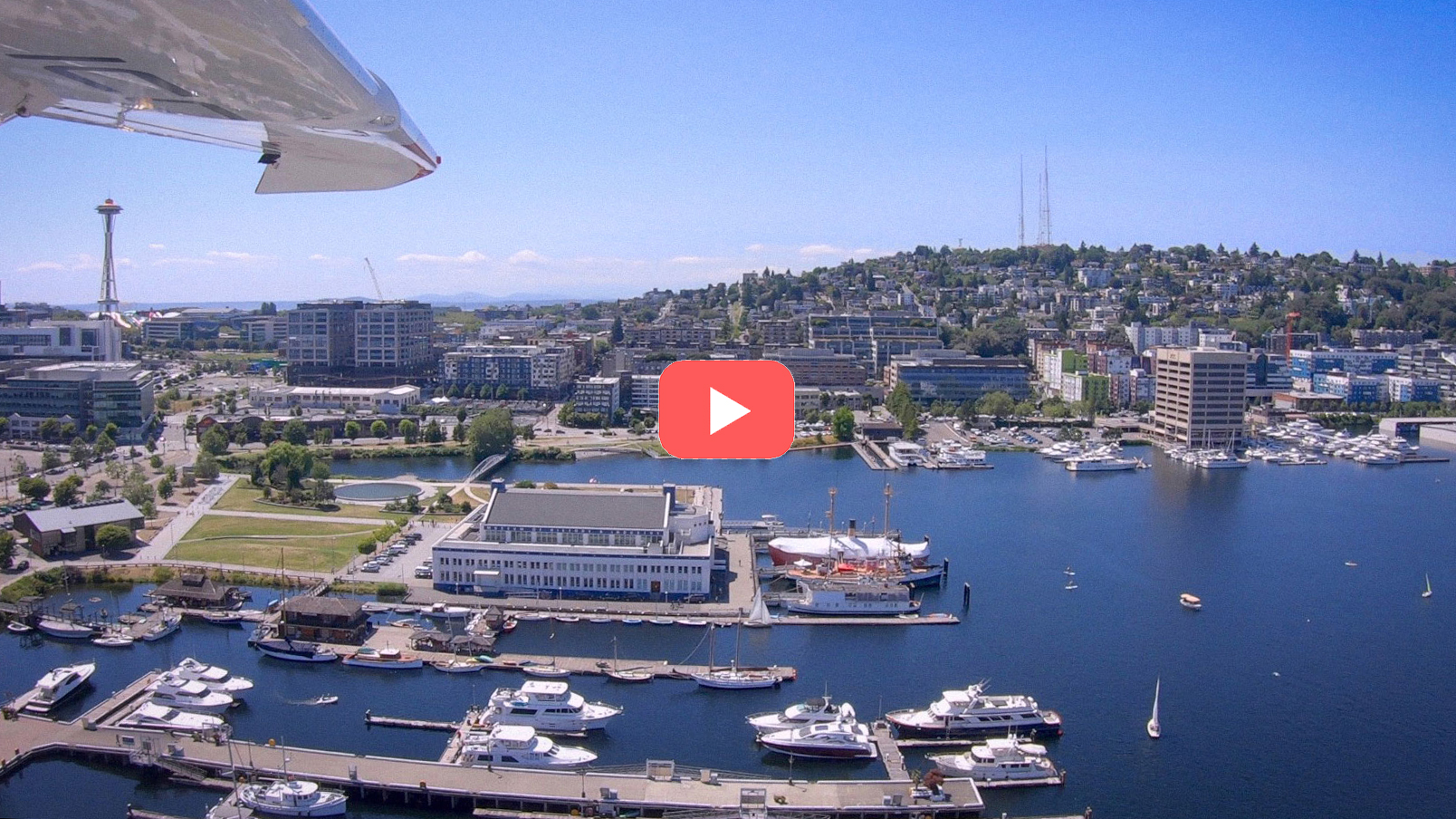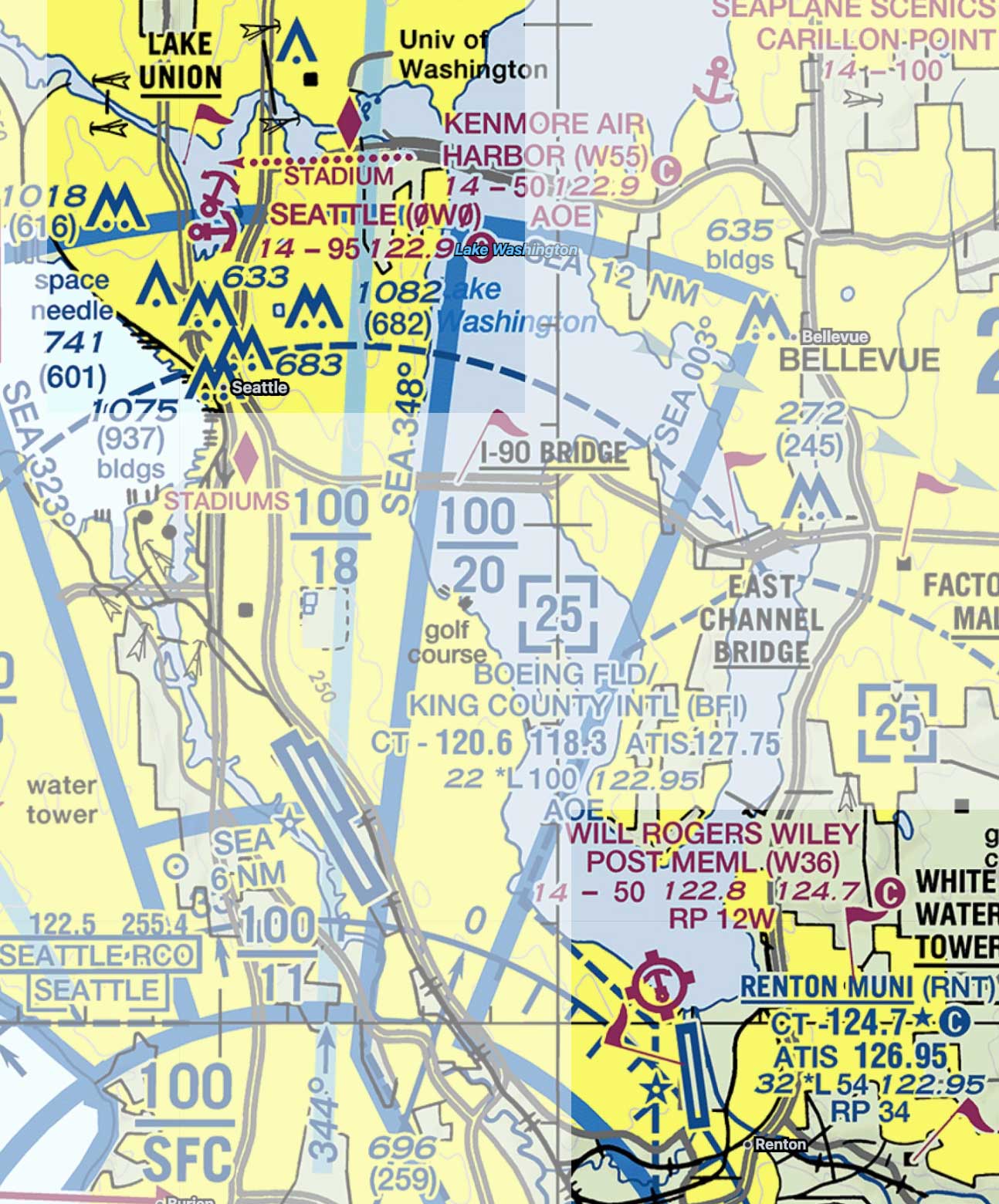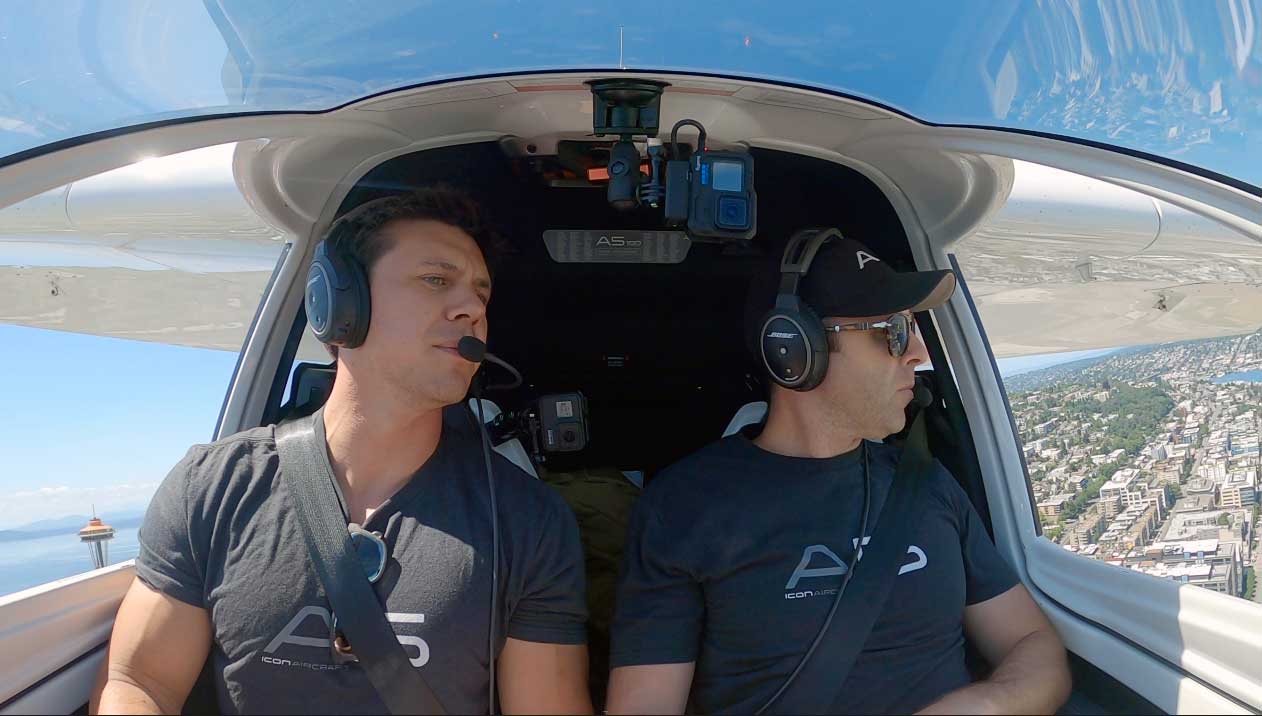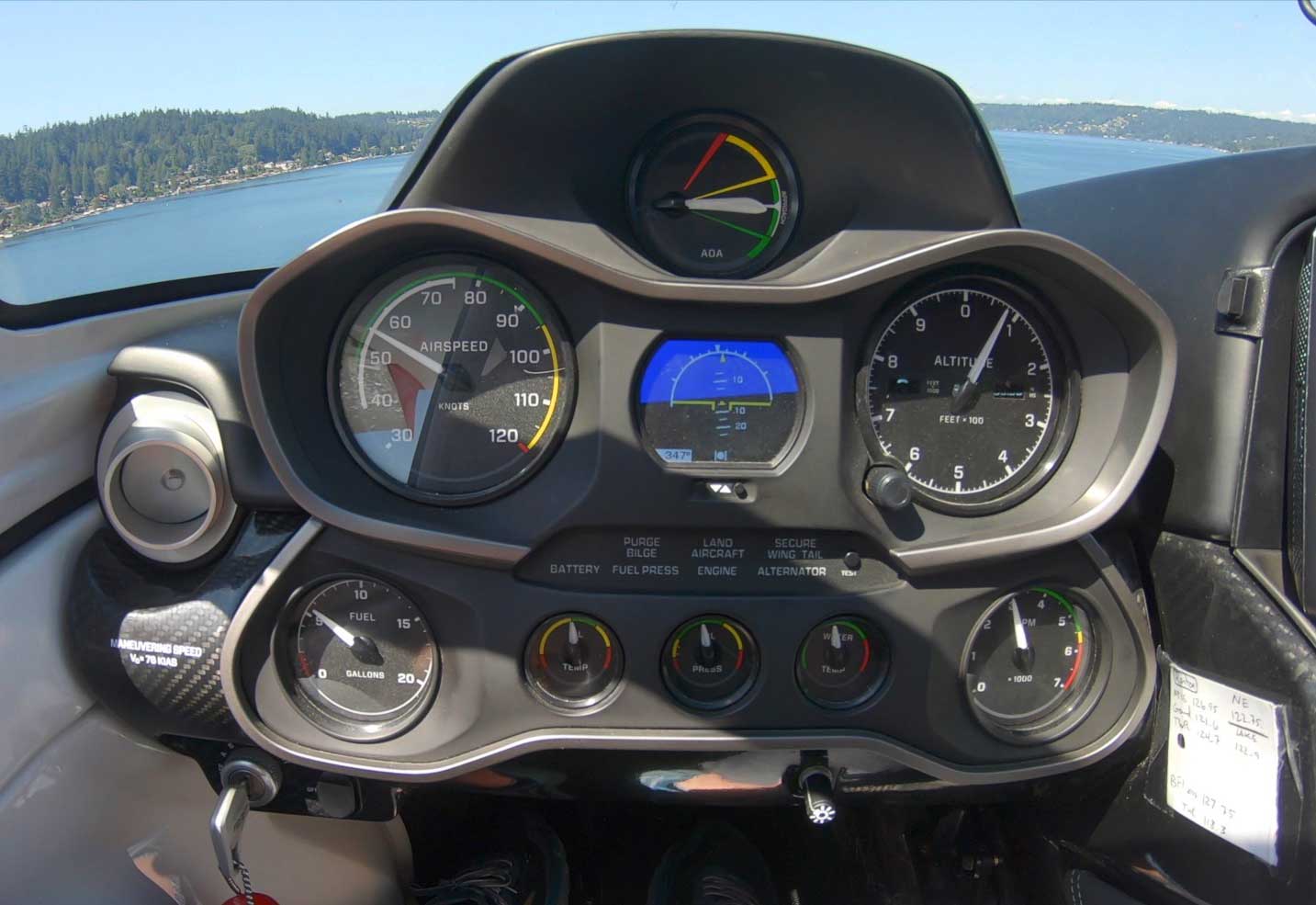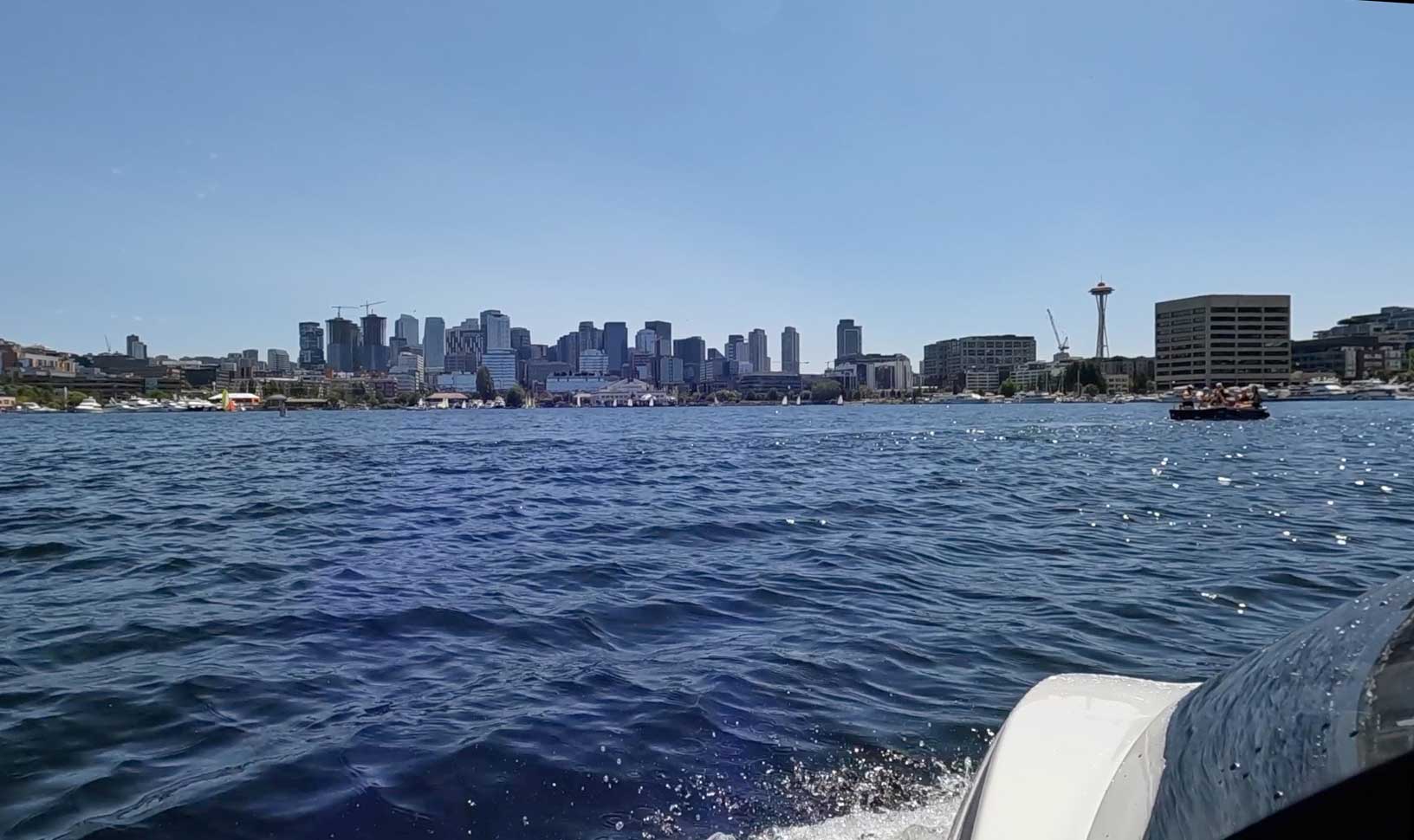There is no city like Seattle, Washington.
For three months out of the year, the clouds subside and a metropolis melding lakes, forests, skyscrapers, and towering mountain backdrops reveals itself, opening its arms to seaplane pilots and boaters alike.
Flying the ICON A5 above the lakes of Seattle is about as close as one can get to choosing your own adventure. Each lake offers a different vantage point and runway for seaplane pilots interested in fully immersing themselves in the Emerald City. Topping the list of adventures is landing the ICON A5 in Lake Union, using the Lake Union Approach. The approach takes about ten minutes from Renton Airport to downtown Seattle, and allows pilots to fly into the heart of the city.
I had the chance to fly the Lake Union Approach with Alex Mason, ICON’s Regional Sales Director in the Pacific Northwest. Having trained and earned my license in a completely different envelope (Los Angeles) I’m a low-time pilot who is not familiar with flying in Seattle. Suffice to say, the Lake Union Approach is not a discovery flight for seaplane pilots new to Seattle to be flying solo. While local seaplane pilots have likely performed this approach many times before, realizing the proper checkpoints, position reports, and properly reading the sea-state makes this a flight to do with a co-pilot before experiencing on your own or with another passenger.
In short, the approach places Lake Union on one wing and the Queen Anne TV Towers on the other. The base-to-final turn winds a few hundred feet above the city skyscrapers, setting up the Lake Union docks as your runway centerline for short final. Below is the route Alex flew with me from Renton Airport to downtown Seattle for the Lake Union Approach.
Departing out of Renton Airport (KRNT) Seattle, WA
Renton Airport sits just north of Seattle International and is slightly East of Boing field. While both of those airports aren’t exactly in the sticks, as far as seaplanes are concerned, Renton airport offers the quickest means of reaching the water. A seaplane base (R36) sits just off the surface runway and is for all intents and purposes an extension of the airport, making Renton a great launching point to begin the quick flight to Lake Union.
The “East channel departure” is the request to Tower and the route to follow when taking off. It only takes a couple of minutes before the Seattle Skyline begins to appear over the left side of the aircraft with the first checkpoint being the I-90 bridge that feeds into the downtown area.
Position Reporting and Airspace
The Seattle seaplane community is very tight-knit and extremely communicative. A vibrant seaplane community can only thrive if the environment allows and best safety precautions are followed, thus position reporting is not simply a matter of etiquette but a strict rule to follow.
For instance, a number of seaplanes could be taking off and landing beneath you, while above you is a Class Bravo shelf scattered with jets and cargo planes.
Renton Airport’s Class D airspace is relatively short-lived. Upon takeoff, it takes only a couple of minutes for our frequency to be terminated as we move under Boeing’s Class D and Seattle’s Class B. Upon termination, switching over to the seaplane frequency is the best practice to de-conflict with the other seaplanes in the area. Communications are done on the common seaplane frequency 122.9.
The Bravo shelf sits at 2000ft above us the entire time, so the route is flown at 1500 ft AGL to keep us from busting the Class B airspace. So while you have to look out below and in front, one must still be mindful of not climbing above.
Major Checkpoint: Husky Stadium
Husky Stadium, home to the relatively competitive University of Washington Huskies Football Program, is the first VFR waypoint for setting up the approach. Three miles from the center of Lake Union, Husky Stadium is roughly where you’d start configuring the aircraft for landing: performing a feet wet check, getting down or close to pattern traffic altitude, and scanning for other traffic that may be approaching into or taking off from the lake. This vantage point is also the first location where, from the left seat, the pilot can make a determination as to whether there are enough viable lanes to land in the relatively small lake (i.e. to decide whether there are too many boats or other seaplanes on the water).
Downwind: Aurora Bridge and Queen Anne Towers
Sitting about 150 feet over Lake Union is the Aurora Bridge. This point is a good landmark and identifier to begin downwind and to begin configuring for landing.
Pulling the power back to 3000 RPM gets you comfortably into the white arc so you can lower the flaps, and lets the A5 settle into pattern altitude.
This for all intents and purposes is where the downwind begins, so maintain a straight-and-level flight and identify the Queen Anne Radio Towers that will in a short time appear to your right. Maintaining the Queen Anne Towers in your sight will help keep you set up well on the downwind, but will also allow you to be mindful of the terrain overlooking Lake Union. If you’re scoring at home and looking at the Sectional, these towers are identified as being 616ft above the ground AGL. To be clear, you’re not overflying the towers but rather identifying them to again maintain situational awareness of the environment surrounding you and to ensure you’re properly extending your downwind.
Base Turn: The Space Needle
Now the real fun begins. Abeam the docks at the front of the lake, and nearing one of the most recognizable landmarks in the United States, you can begin your base turn. Lake Union is at sea level so at this point the traffic pattern altitude is 1000ft, which is what you’d hold until the Space Needle appears off your right. Nothing fancy—the ICON A5 turns a gentle 20 or so degrees to line up for the final approach as we identify a clear lane between a few (exotic?) boats. The pilot on this approach has the landing approach and lane to monitor, but the passenger has the privilege of soaking in exactly what they’re doing. Looking outside the A5 with the windows out, about a dozen Seattle Skyscrapers, apartment buildings, and rooftop pools are hundreds of feet below, watching us as we make a boring turn that planes have done millions of times feel in a word, majestic.
The Final Approach
From final to short final, focus shifts from the terrain and obstacle (building) clearances and in confirming the sea state and water lanes are suitable for landing. Lake Union’s 4000ft runway comes into focus as the A5 descends closer to the water. At this point, it’s a matter of flying “white line” on the ICON A5’s Angle of Attack indicator as the A5 glides down onto the water.
On the Water: Lake Union
There are some unusual boats on Lake Union. Floating hot tubs complement a few speedboats that add to a collection of seaplanes that on a busy day, make for an eclectic community. The variety of vessels aside, one of the challenges that Lake Union—and many lakes for that matter—creates is that sitting on the water for an extended period of time makes it more challenging to see the surrounding boat wakes. Short of not doing a full stop on the water, one method of alleviating this is to consider doing a quick recon from the step of the ICON A5 seawing, which will give you a better vantage point than the seat of the ICON A5 (which sits on the water). Regardless, the point of the matter is to be prepared for some possible rough water procedures and if venturing to the lake on an incredibly hot day, to possibly reconsider extending your runway length.
Final Thoughts
The Lake Union Approach doesn’t require any skills a competent seaplane pilot doesn’t already possess. But what it does require is enhanced situational awareness, which can be obtained by flying with a pilot familiar with the approach.
For the untrained seaplane pilot who spots the A5 or any other seaplane landing on Lake Union, it might appear that there’s nothing to it. You circle around, float above some buildings, find a spot on the water, and splash down in front of a few locals. Obviously, the Lake Union Approach begins much sooner than this, as outlined in the steps above.
Being able to land on the water and splash down in front of one of the most picturesque cities in America is certainly a treat and a bucket list experience, but it requires at least a few fam flights and the discipline to divert to a different lake if need be. Hopefully, the above helps set the table as to what you can expect on this approach and gets you excited enough to want to experience it for yourself.
If you’re in the Seattle area and interested in requesting a demo flight for yourself, please request a demo flight below.
Paul is the Director of Marketing for ICON Aircraft. Before ICON, Paul was the Director of Video and Branded Content for Ranker, INC. and The Wrap. He was the host of Hulu's first original production, The Morning After, and co-developed Twitch.TV's first talk show, Game Talk Live. He is a private pilot based out of Pasadena, CA.
